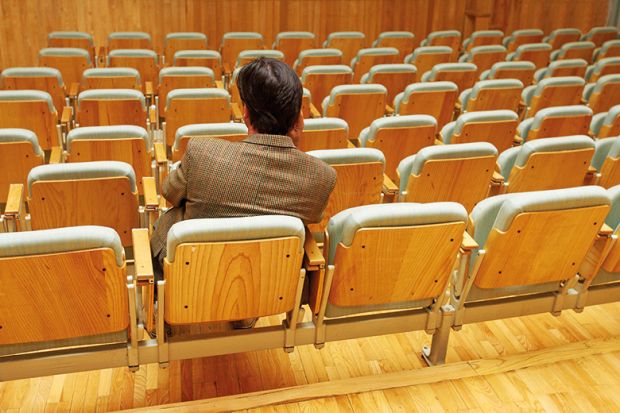The likelihood of Australian university closures has increased, after prime minister Scott Morrison announced further social distancing measures.
Mr Morrison said that for indoor gatherings of fewer than 100 people, venues would now be required to allocate at least four square metres per person. To illustrate, he said the Australian parliament’s voluminous chamber would be restricted to gatherings of less than 100 people.
The prime minister acknowledged that the directive would be difficult to implement in “essential areas”, which include universities, but he said the sanction was necessary to reduce transmissions of Covid-19. “If we do it broadly, then we’re slowing the rate and we are saving lives,” he told a 20 March press conference.
Many universities have anticipated such demands. Thirty-five of Australia’s 41 universities have now unilaterally declared their intention to teach substantially or completely online, with two more institutions - the University of the Sunshine Coast and Curtin University - announcing plans to “pause” for a week to change their operations.
However, most universities intend to maintain access to common facilities like libraries, food halls and study spaces. That approach appears increasingly problematic, with local councils already closing public venues such as libraries, pools and gyms.
Three universities - Monash, Deakin and University of Technology Sydney - are reconfiguring their lecture halls and classes to meet social distancing requirements. But as the government tightens these requirements every few days, this will also be a difficult strategy to maintain.
Just three universities - Adelaide, Edith Cowan and Federation - say lectures and smaller classes will proceed as planned. Federation said it was “open for business”, while Edith Cowan said it was “acting on the latest advice of the Australian government”.
More universities have recorded coronavirus infections among their students, with Queensland University of Technology and the Australian National University (ANU) reporting their first cases. Both institutions are pausing classes for a week from 23 March as they shift their classes online.
Some students may benefit from the crisis, with the government announcing that it would ease restrictions on the hours international students employed by aged care centres were entitled to work. Similar changes have already been instituted for foreign students working as nurses and supermarket shelf stackers.
Wollongong University has waived the Student Services and Amenities Fee normally levied on students in Australia for the first half of this year. It says students who have already paid the fee will be reimbursed. Meanwhile, ANU has committed to pay its casual staff for all scheduled classes this semester if its campus is forced to close.
Gestures like these are not enough for the National Union of Students (NUS), which issued a litany of demands to minimise the crisis’ financial impact on students. “If this continues bills will stack up, evictions will occur and income support payments will be lost,” the NUS warned.
The NUS wish list includes relaxed access rules for income support payments, free flu vaccines for welfare recipients, two weeks of extra government-subsidised leave for all workers, an “immediate untied funding injection” for higher education, and a “moratorium” on evictions and power and water bills.
Register to continue
Why register?
- Registration is free and only takes a moment
- Once registered, you can read 3 articles a month
- Sign up for our newsletter
Subscribe
Or subscribe for unlimited access to:
- Unlimited access to news, views, insights & reviews
- Digital editions
- Digital access to THE’s university and college rankings analysis
Already registered or a current subscriber?








